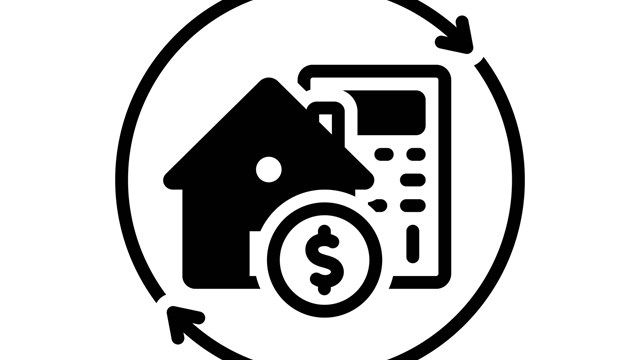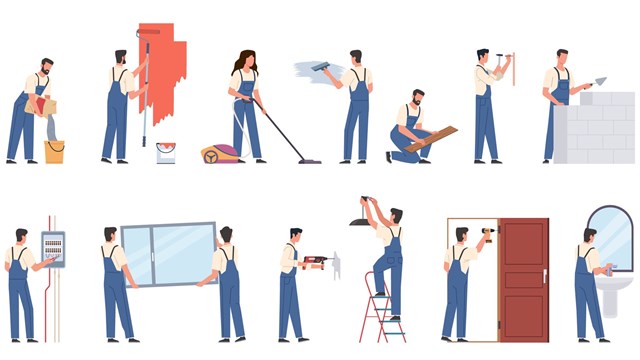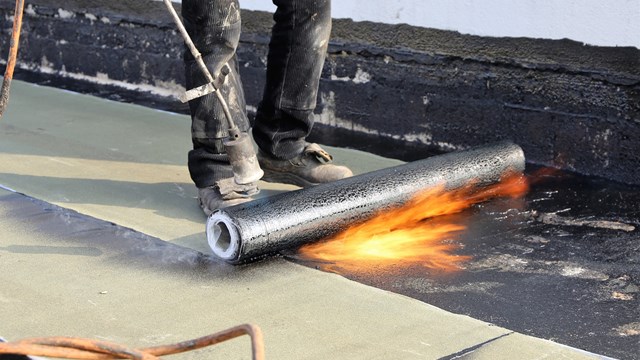
When it comes to multi-family communities with shared accommodations, failing to plan for a rainy day could mean that when the rains do eventually come—and they will—bailing out will be much harder, and more costly, than it might have been if certain preparations had been made before the clouds burst.
Co-op and condo communities are set up for families and individuals to mutually benefit by living together and sharing the burdens of upkeep and governance. But these communities are businesses, and the individuals who manage co-op and condo buildings must be businesslike in preparing for emergencies such as a boiler going haywire, and for future costs, such as repairing a building’s façade or replacing its windows.
Financial consultants advising co-op and condo buildings and HOAs tell clients to keep their buildings’ reserve funds well-padded in case an emergency expense such as a lawsuit or roof-damaging storm happens and requires immediate attention. It’s not the simplest task, even in the best of economic times. Given the measured growth of the current economy, many residents are watching their costs with a gimlet eye—so these days, it’s more important than ever for boards and managers to carefully manage their buildings' reserve funds.
With the right guidance and knowledge, management personnel and board members of buildings and associations can stay ahead of any fund-related crisis by ensuring their reserves are adequately funded. It’s about purposefully planning for the rainy days which ultimately will come.
Reserve Funding Rules
So what is the formula by which a building or association can calculate how much money it should maintain in its reserves? The answer is that there is none—no way to permanently pinpoint the oft-changing needs of the physical aspects of a multifamily building. One can certainly hypothesize about those expected costs, though. Planning of expenditures really is like hitting a moving target. The task of knowing what costs will require capital in the short-term and long-term is a never-ending job that must be evaluated—and re-evaluated—at least every few years
“There is no actual formula that can be applied without taking into account the physical assets of the association,” says Russ Fernandes, R.S., a senior vice president and a principal of Becht Engineering, PC, a reserve study preparer and engineering firm, which has offices in New York, New Jersey, New England and around the country. “The way the capital reserve is typically developed begins with an inventory of what the association is responsible for.”
To start, a thorough inspection of the association’s property must be conducted by a qualified reserve study specialist. Sometimes that expert is also an engineer, from a firm that does both reserve studies and engineering, but in any case, the specialist should be able to knowledgeably inspect and consult on the physical state of the property—particularly the common elements of the building. The studies in New York are often called capital needs assessments.
While reserve studies are more common in other parts of the tri-state area, they were not always popular in Manhattan, says leading reserve study specialist Mitch Frumkin, PE, RS, CGP, president and founder of Kipcon, a full-service engineering firm headquartered in North Brunswick, New Jersey. “In Manhattan, people were forever steered away from reserve studies because it was putting an obligation on buildings to set aside money.”
One of basic premises of any reserve study or capital needs assessment is to evaluate your building components to determine their life spans. “You have to inspect the property—define the liabilities and determine how much money you need to fund the property,” says Kevin Bobb, R.S., CEO/founder of Building Reserves Inc., a reserve specialist company based in Chicago.
While there is no mandatory timetable for funding a building’s capital reserve coffers, generally speaking experts say such an evaluation should be done at least every three years. Also, the FHA recommends that buildings should fund their reserve by setting aside 10 percent of their revenues strictly for that purpose. That percentage isn't foolproof—depending on a building or HOA's physical condition and the income level of its inhabitants, 10% could over- or underfund a the reserve; there's no real one-size-fits-all prescription. But national standards established by CAI for reserve funding dictate a building should have a governing document that stipulates what assets are covered by the capital reserve, and the terms by which those funds are used.
Mind the Money
Often, more than one person needs to sign off on anyone having access to the reserve fund. In such a matter as this that can involve millions of dollars in funds and have hundreds of millions of dollars of personal property at stake, wise counsel is crucial. Hiring a reserve specialist is essential, because such a professional takes a methodical approach to evaluating the needs of the community, and by extension, its reserve fund. These specialists usually take at least three years of data on operations and expenses into account while evaluating a building’s reserve funding needs. It’s a question of a building’s management staff’s handling of its Percent Funded ratio: i.e., the measure of an association’s reserve cash in relation to the deterioration of its physical assets. This percentage tells an association if they have enough cash on hand for operations. Most pros agree that a Percent Funded ratio of 30 percent is far too little and could result in a special assessment put on residents, while a 70 percent ratio of funding is considered well-funded, says Robert Nordlund, PE, RS, founder/CEO of Association Reserves, a national reserve study firm based in Calabasas, California.
The purpose of a reserve study is multi-pronged: first, it should seek to minimize unnecessary expenses by avoiding deferred maintenance and special assessments, Nordlund says. Each study should be done in the interest of fairness to all residents, as well as in the interest fiscal responsibility. And, a reserve study should work to maximize residents’ enjoyment of their community facilities.
Reserve funds are generally put in CDs or another type of fund that has essentially no risk attached. The idea is for these funds to be there when needed, and so risking them on chancy investments, such as stocks, would defeat the purpose. Many building boards recognize this in their own rules.
“In their governing documents, most associations specify that reserve funds should be kept as money market or CDs, which are federally insured,” Fernandes says.
Watching the Shop
The task of overseeing a building or HOA’s reserves should not be left to just one person, and by law it cannot be so. The board has a fiduciary responsibility to ensure that the building is run in a professional manner. Because of this, both the property manager and the board members are responsible for proper management of the reserve. Add to that team a qualified reserve specialist, and a building is prepared for the worst.
That specialist should help the building by preparing a reserve study, or by re-evaluating a reserve study that’s already done. A reserve study contains a component list, which details all physical assets of the association and the condition of the assets. A cost estimate for replacement of the items is included, as is an estimate of the expected lifespans of various assets. A reserve study also contains a calculation of the reserve fund’s strength: i.e., its Percent Funded ratio. Finally, a reserve study also should have a long-term plan—national standards require at least 20 years—for the fund over that period. Some firms look farther ahead.
“Our firm always does 30 years… California law says you must do 30 years out,” Nordlund says.
Performing a new reserve study from scratch—or after years of neglecting the task—differs from a building/HOA just updating an existing reserve study. A new reserve study done for the first time does not have a previous study with which to compare its observations. Some reserve specialists recommend that a re-evaluation basically be an entire new study.
“Once every three years, the study should be re-evaluated, preferably by the original reserve study firm (it’s cheaper to do it that way),” Bobb says. “When a reserve study is evaluated, everything should be re-done and audited. We are basically conducting a whole new study.”
Just as a team is needed to manage the reserve, a team also is needed to access the funds. Usually, checks and balances on who has access to the funds require that at least two people sign off on any access to the reserve. That way, no single person can fiddle with the fund without others being aware of it. This safeguard helps prevent misuse of the funds. There is an important difference between how a co-op’s reserves are managed versus management of a condo’s reserves, and that pertains to which physical assets are the responsibility of the association. In a condo building, usually the reserve is intended for the building’s common elements, like its façade and roof. In a co-op, much of the interior of the apartment also is considered a reserve component.
Larger economic tides affect building reserves, if they are invested wrongly. Conservative investments like 5-year CDs will stay safe. Speculating in the stock market with reserve funds should never be done. That way, a bad year on Wall Street shouldn’t hurt the reserve fund. But a major dip in housing prices could, over the long-term, translate into problems for reserve funds if units aren’t selling. Generally, though, taking a conservative approach with the reserve and following expert advice should weather-proof a building, so to speak, when times get tough.
“They must keep current with the reserve study updates,” says Fernandes. “They also have to keep up on maintenance. When times are tough, they must ensure they are performing their due diligence.”With the right planning, multi-family buildings and HOA communities can protect (and sometimes, even increase) their reserve funds during leaner economic times. They need to follow a properly performed reserve study.
“We recommend a study be 105 percent or 110 percent funded,” Bobb says.
Help is Here
A variety of resources exist to help co-op/condo administrators learn more about getting a reserve study done and managing their funds. The Community Associations Institute (CAI), which has chapters in New York City, Long Island and the Hudson Valley, provides guidelines and some instruction in this area and has a library with many documents on reserves: the organization also has offices nationwide.
While it is recommended that management staffs get help in handling reserves, some of the process relies also on common sense thinking. Fundamental to the process of devising, updating and adhering to a reserve study are basic considerations.
“My first question to a client is: What are your common area assets?” Nordlund says. “It’s about matching the reserve fund with the cash needs of the association.”
Jonathan Barnes is a freelance writer and a frequent contributor to The Cooperator and other publications.









Comments
Leave a Comment